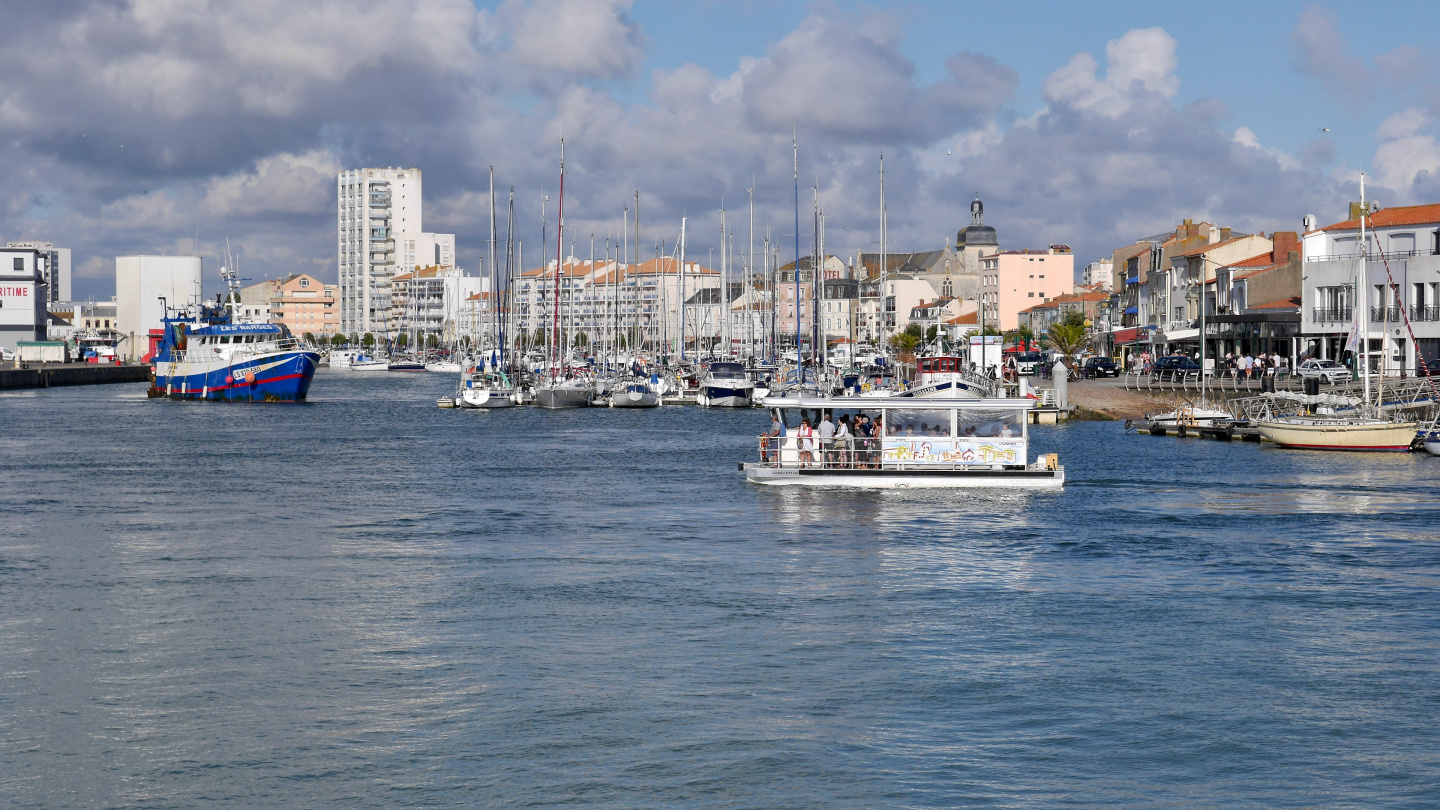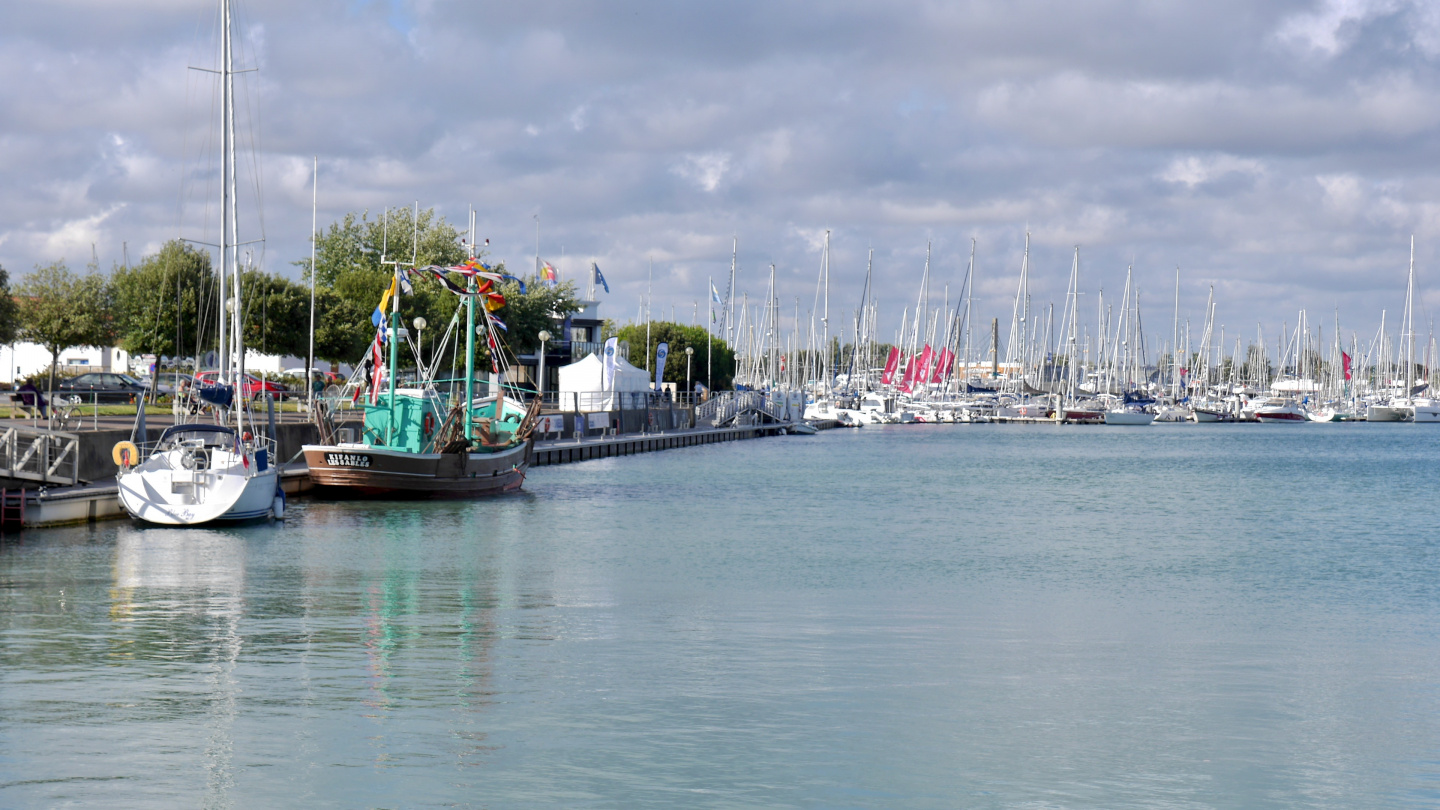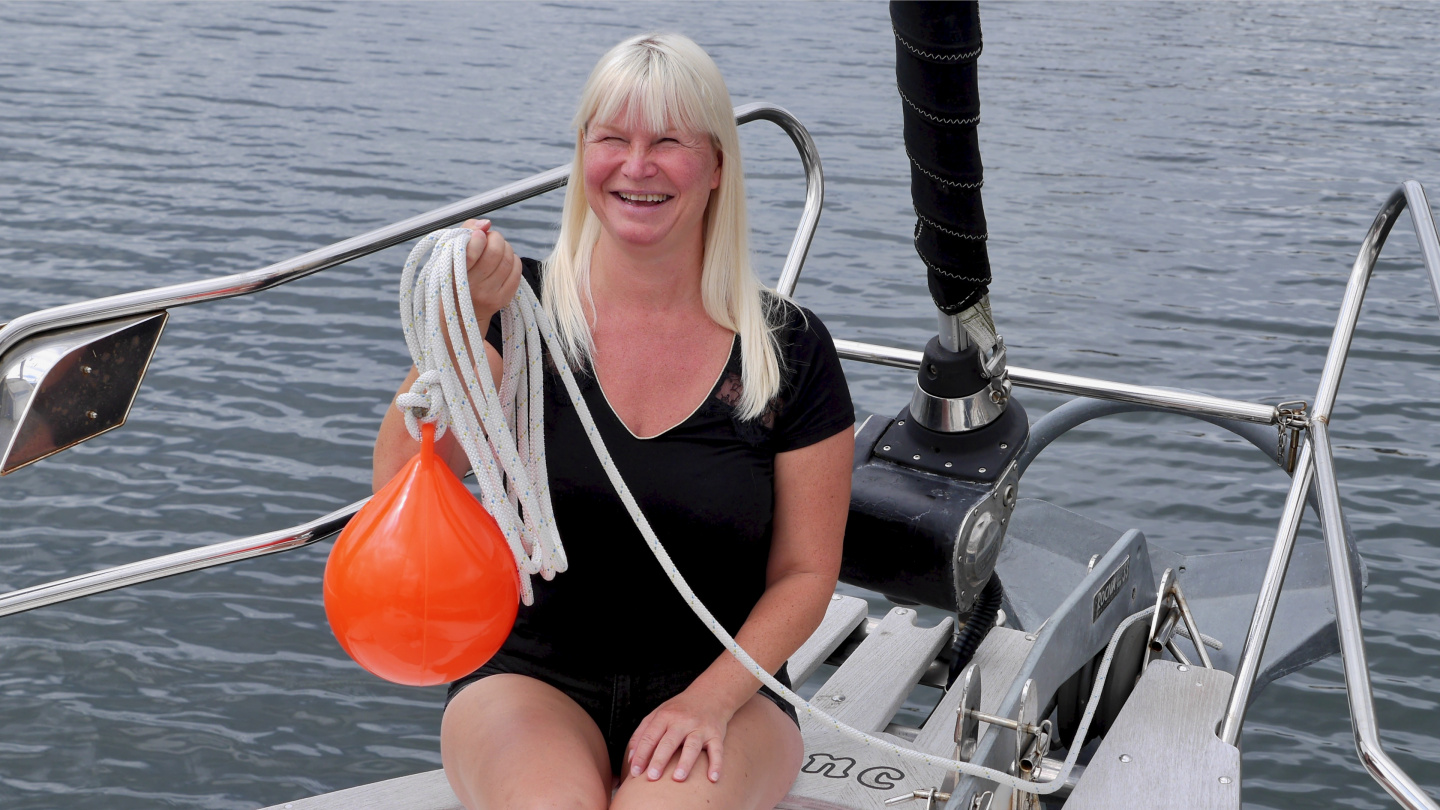From the island of Yeu it is an easy 29 nautical miles sail to Les Sables d’Olonne. There are two marinas, a fishing port and a commercial harbour. The first and smaller marina as well as the fishing and commercial harbours are situated about half a mile up the entrance canal on the right. On the internet forums there were several discussions about the fishing boats departing early morning creating some swell to the still sleeping sailors. But on the other hand the marina is located just next to the famous Sables d’Olonne promenade.


We continued a bit further into the huge marina of Port Olona. The marina had excellent arrangements for visiting yachtsmen. All boats were asked to stop on the waiting pontoon and visit reception for berth assignment. It is very big marina of 1500 berths and this helps the organising the berths for all visitors easily.

Just as we had made her fast to the waiting pontoon we heard a happy welcome from Caroline and John who had arrived before us on their S/Y Ceilidh.
We got the berth from the pontoon H at the end of the marina, close to the Vendée Globe pontoon. On Saturday we had to visit there and step with our own feet to the pontoon from where every fourth year the most demanding and valued sailing race starts. Vendée Globe is a non-stop singlehanded race around the world that is sailed by extremely fast IMOCA 60 monohull boats.

It was huge to walk on the Vendée Globe pontoon and imagine the feelings which sailors must have had last November before departing into almost three month long singlehanded sailing. During the race they cannot receive any outside help. They must be prepared to deal with all possible conditions alone including fixing the boat with all of its onboard equipment and going aloft. Then adding the changing conditions from the heat of the equator to the snowstorms on the Southern Ocean. How about sleep management and mental well-being? We must take our hats off from the respect to these guys!

The Vendée Globe pontoon was rather wide. Three normal pontoons were put together to create one jumbo-sized dock. In the middle was still another widening or should we call it a plaza, probably for the tents of the race committee or sponsors, at least we think so.
We also noticed that we had arrived to the heart of the French boatyard industry. Most of the French boatyards are located around Les Sables d’Olonne and La Rochelle. In Port Olona one big pontoon was full of Lagoon catamarans and there were own buildings for both Feeling and Privilège Yachts yards.

If there is a need for repair of your own boat then the help is nearby for sure on this area. Also for visitors help there are even three chandleries and we finally managed to acquire an anchor buoy there. Several times we have been thinking when the famous “Oh s…” would happen as we had missed the anchor buoy. At the bottom of the sea can be an old oyster bed, chain, even coral or a big stone where the anchor can get stuck. Now and then there is a warning in the pilot book and recommendation to use a tripline for the anchor. If the anchor gets stuck then it might be impossible to free it by pulling from its chain. The anchor buoy is fixed close to the part where the shank is connected to the fluke. This allows the pulling of anchor “wrong way” and getting it free.

There are a few restaurants on the eastern side of Port Olona, but the main dining area is at the waterfront of Sables d’Olonne next to the smaller marina. There is electric-ferry transferring people from one side to another just to the start of the famous promenade. On our way out I had to listen hard, how this thing is moving? On a way back we went to the back of the ferry but it was still quiet. There were two ferries, one in operation and departing every 10 minutes while the other was charging in Port Olona.



